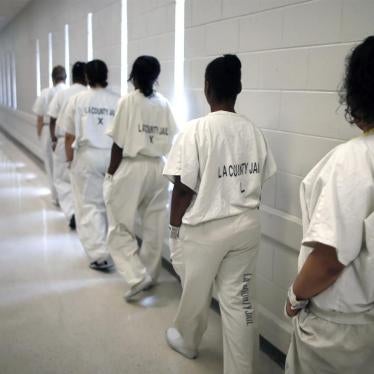One summer afternoon, police in Los Angeles County attempted to stop a man on the sidewalk. The man ran, tossing a gun as he escaped. The next day, the officers arrested Dante Johnson, claiming he was the man with the gun. In court, Dante (whose name I have changed to protect his privacy) told his lawyer he had an alibi and that his prints would not be on the gun. His lawyer noticed that the description in the report did not match Dante. They decided to fight the case.
His lawyer asked the judge to release Dante on his own recognizance so that he would not have to sit in jail for 90 or so days as he waited for his trial. Despite Dante’s lack of a criminal record, and without any evidence that he was a danger to anyone or likely to skip out on his court date, the judge set bail at $50,000, which Dante could not possibly afford. After 65 days, the prosecutor offered him freedom if he would plead guilty. Despite having a strong defense, Dante accepted the prosecutor’s offer, making him a felon.
Setting bail this way is common practice in California courts, but an appellate court has just handed down a decision confronting this abusive judicial practice.
The California Constitution guarantees that people accused of crimes, like Dante, will be released on their own recognizance or released on bail, with a few exceptions. Capital murder defendants can be held without bail as well as those accused of violent crimes and felonies, but only with clear and convincing evidence that there is a substantial likelihood that releasing them will result in serious injury to someone else.
But, despite this rule that so strongly favors pretrial release — upholding the fundamental presumption of innocence — 63 percent of people in California jails have not been convicted and are waiting on resolution of their cases.
For years, California judges have defied the spirit of the law and set high bail as a way to keep in custody people who should be released. Rather than hold hearings in which prosecutors would have to present evidence that the defendant is substantially likely to seriously injure someone, a difficult standard to meet, judges simply set unattainable bail. Quick and efficient, but wrong.
Judges use bail in this way because these hearings are time-consuming. Also, everyone who works in the court system knows that people who are released fight their cases longer and more effectively, while those in custody, like Dante, plead guilty more quickly. Less than 3 percent of criminal cases in California go to trial; most resolve the case through guilty pleas. People unable to afford bail often plead guilty, not because evidence proves their guilt, but because doing so is the quickest way out of jail.
Human Rights Watch analyzed data in representative California counties and found that vast majorities of people released from jail as “sentenced” were released before the earliest possible date they could have gone to trial. In other words, to assert their innocence in trial, they would have had to reject a plea deal offering freedom and stay in jail longer than they did by pleading guilty.
Holding people in custody through high bail contributes to the efficient production of criminal convictions, regardless of actual guilt or innocence, but perverts our justice system.
The appellate court, calling this practice a “deformity in our criminal justice system” and “a blight,” ordered judges in California to make significant changes to conform to our constitutional mandate.
The court decision says judges may no longer simply use high bail for “preventive detention.” If an accused person is eligible for release on bail, then the judge must hold a hearing to determine his ability to pay that bail and not set an unattainable amount. The judge must hold a further hearing to see if there are nonfinancial conditions, like orders to stay away from a person or location, that would comply with the legitimate goals of setting bail.
Under this framework, if prosecutors believe someone should be detained until his trial, the prosecutors will have to present evidence that meets the constitutional standard, and judges will have to take the time to hold those hearings.
This approach is more consistent with justice than the existing practice. It protects the public from actual, known dangers while following the spirit and intent of our state constitution. It gives us more faith that people pleading guilty actually are guilty. It does not punish people for being poor. It honors liberty and the presumption of innocence.
Judges and prosecutors, accustomed to moving court dockets quickly by holding perfunctory bail hearings and coercing guilty pleas from people in custody, may resist obeying the court’s directive and try to find loopholes to avoid releasing people or holding thorough hearings. The court acknowledges that its directive will be less efficient in processing cases, but reminds us that “the highest judicial responsibility is and must remain the enforcement of constitutional rights.”
Hopefully, our judges will accept this responsibility even though more people will be released pretrial and fewer people will be coerced into guilty pleas. Hopefully, this case will signal a change in how our courts function — away from a system whose purpose is to incarcerate people rapidly and efficiently, and toward one that protects public safety and respects the rights of every individual.









